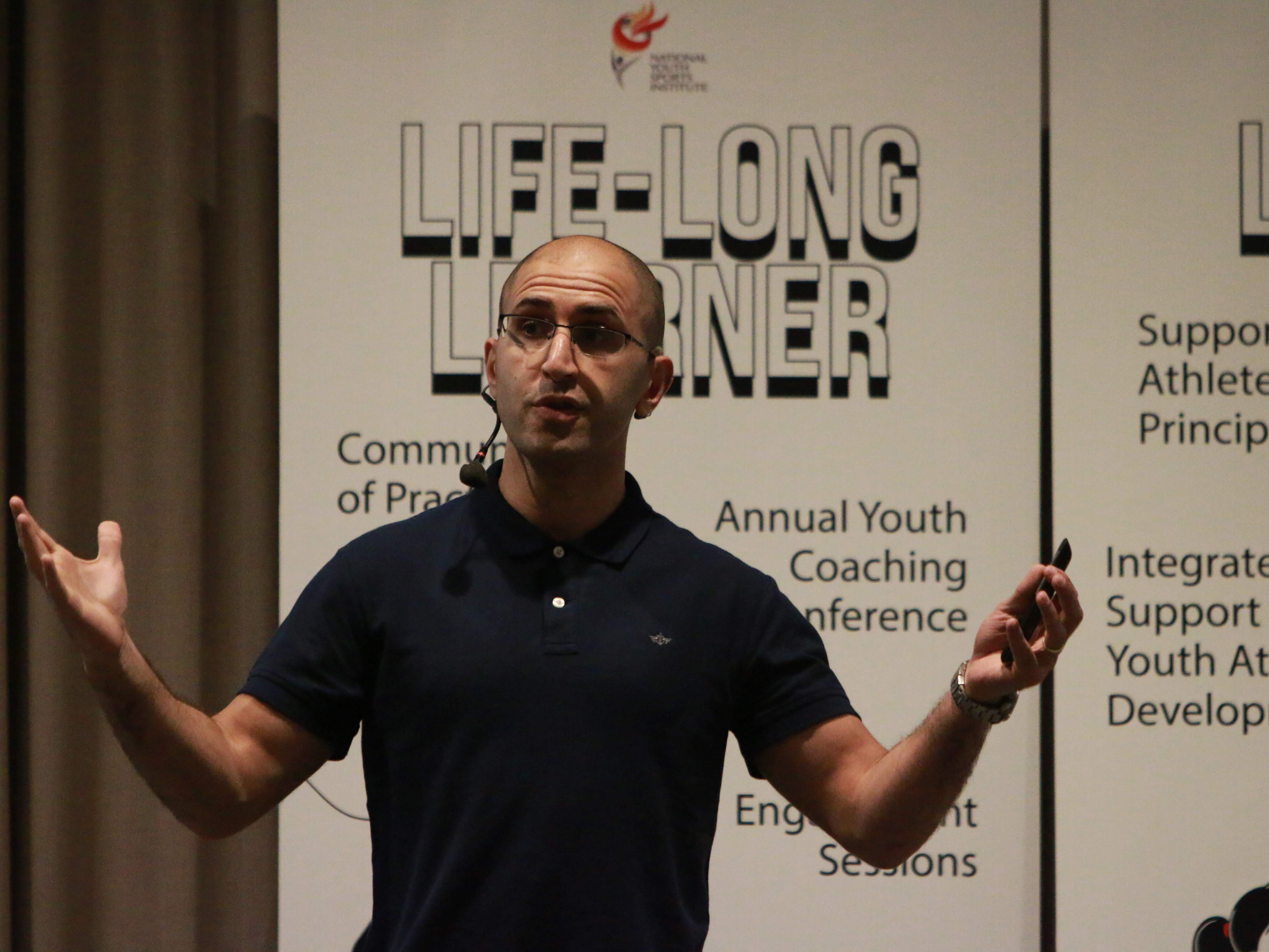Bridging the Science-Practice Gap: Strategies for Youth Athletes
 Dr Israel Halperin making his keynote speech at the 2019 Youth Coaching Conference.
Dr Israel Halperin making his keynote speech at the 2019 Youth Coaching Conference. You will find coaches on the field and sport scientists in their lab. It is not often that we see them working side by side. Is it important for them to work together? If so, when and how can we bridge this gap between practice and science?
Ex-athlete, coach, and researcher Dr Israel Halperin spoke on this topic with the participants at the Youth Coaching Conference on 25-26 Jan 2019. In his keynote speech, he talked about evidence-based practice (EBP), the strength and weaknesses of each channel, and six strategies to become a better EBP coach.“There are two main outcomes that are born out of the (EBP) framework. The first is to propose and develop different systems to rank the quality of evidence. The second is to propose strategies to integrate knowledge when making decisions,” Dr Halperin explained.
Both channels have their own strengths and weaknesses, but it is the integration of both that makes a difference.
“In coaching, there are many different variables when making a coach-related decision, such as the athlete’s mood, how much they are sleeping, and their game schedules. In research, you can’t take into account all these variables,” said Dr Halperin.
“However, what we see is not always an accurate representation of reality. We humans suffer from a number of cognitive biases. Our memory is malleable. There are so many different biases that influence our thinking and cloud our judgment, therefore we are not making optimal decisions,” he added.
If the scientific method is added in properly, it can overcome many of the weaknesses of having solely a personal experience.
“The scientific method can allow us to establish, with a great deal of certainty, a cause and effect relationship,” emphasised Dr Halperin.
Dr Halperin acknowledged that not many coaches can gain access to sport scientists. He proposed six strategies that can help coaches:
1) Study your enemy. Read more about cognitive biases, be aware of them and learn to overcome them.
2) Frequently ask yourself the question: “Are there alternative explanations for the observed effect?”
3) Reflect honestly: “Why did I make this coaching decision?” “Is it defendable?” “Can I explain it using the EBP framework?”
4) Learn to develop statistical and probabilistic thinking abilities. Coaching is about making decisions in uncertain environments, and the language of uncertainty is statistics.
5) Understand and integrate research outputs into your work. Keep up with research digests and podcasts, read review papers, and follow guidelines of respected organisations.
6) For coaches without access to a sport scientist, take the initiative and contact a sport scientist. One solution is to e-mail sport scientists.
Have a question for NYSI sport scientists? Email us at enquire@nysi.org.sg